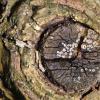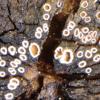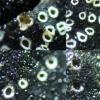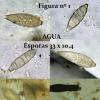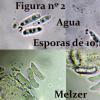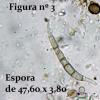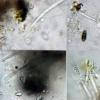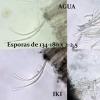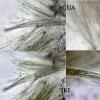
12-07-2015 11:11
En madera de Rosacea (melocotonero)Mer parecio por

12-07-2015 21:45
Marcus YeoThis fungus was growing on dead stems of Sedum (Rh

11-07-2015 16:54
Marja PennanenHello,once again Raitviirs study gave me no answer

12-07-2015 00:05
 Nedim Jukic
Nedim Jukic
This one from the same locality as the previous on

10-07-2015 10:38
Marja PennanenHello forum,these are up to 0,4 mm wide.The spores

09-07-2015 18:28
 Lothar Krieglsteiner
Lothar Krieglsteiner
... in the area of the Dovrefjell National Park, m

09-07-2015 18:37
 Lothar Krieglsteiner
Lothar Krieglsteiner
In the area of Telemark (southern Norway), at the
Capitotricha bicolor ?????
Castillo Joseba,
12-07-2015 11:11
Mer parecio por la foto macro que era Capitotricha bicolor, pero al hidratarla y hacer las fotos x40 veo que esta muy incrustada en la madera.
No he conseguido ver ni esporas ni ascas en las 3 pruebas que he hecho de microscopia.
Alguna sugerencia?
Joseba
Nicolas VAN VOOREN,
12-07-2015 11:30

Re : Capitotricha bicolor ?????
Looks like a Stictis species
Castillo Joseba,
12-07-2015 21:19
Re : Capitotricha bicolor ?????
Hola Nicolás
He intentado hacer una muestra para ver algo mas.... el trozo de madera es muy pequeño y duro, asi que para la muestra he raspado la superficie de la muestra.
He visto por lo menos 3 tipos de estoras, que pongo a ver que te parecen
Figura nº 1 no tengo ni idea a que puede corresponder
Figura nº 2 no tengo ni idea a que puede corresponder
Figura nº 3 Solo he visto 1 y creo que puede corresponder a Stictis crassispora ?
Tambien pongo todo lo que he visto que podrian ser ascoestoras o parafisis ???
A ver que te parece
Joseba
He intentado hacer una muestra para ver algo mas.... el trozo de madera es muy pequeño y duro, asi que para la muestra he raspado la superficie de la muestra.
He visto por lo menos 3 tipos de estoras, que pongo a ver que te parecen
Figura nº 1 no tengo ni idea a que puede corresponder
Figura nº 2 no tengo ni idea a que puede corresponder
Figura nº 3 Solo he visto 1 y creo que puede corresponder a Stictis crassispora ?
Tambien pongo todo lo que he visto que podrian ser ascoestoras o parafisis ???
A ver que te parece
Joseba
Chris Yeates,
12-07-2015 23:33

Re : Capitotricha bicolor ?????
Hola
The first 5 distoseptate navicular conidia in "Figura nº 1" look rather like those of the anamorphic Pseudospiropes simplex, and the dimensions would fit - compare with http://conabio.inaturalist.org/observations/1063708
best wishes
Chris
The first 5 distoseptate navicular conidia in "Figura nº 1" look rather like those of the anamorphic Pseudospiropes simplex, and the dimensions would fit - compare with http://conabio.inaturalist.org/observations/1063708
best wishes
Chris
